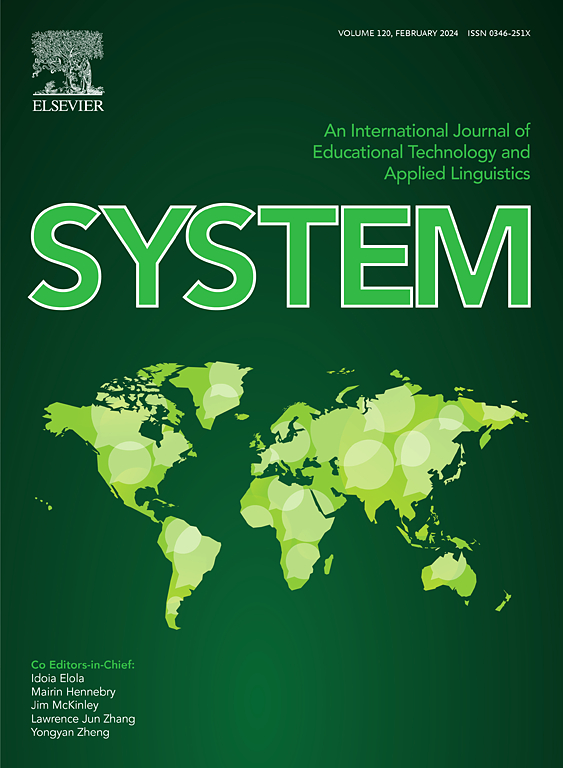L2数字多模态作曲的质量和预测因素:混合方法研究
IF 5.6
1区 文学
Q1 EDUCATION & EDUCATIONAL RESEARCH
引用次数: 0
摘要
关于数字多模态组成(DMC)在第二语言(L2)学习中的研究正在扩大。然而,对内容领域课程中二语学习者DMC产品质量以及影响DMC质量的变量的关注是有限的。该混合方法研究旨在通过确定DMC质量的可测量特征和测试预测变量来填补这一空白。33名参加第二语言文学课程的韩国大学生被要求在两周内通过主题分析一个舞台剧,分别创作一篇DMC博客文章。此外,他们还完成了一份调查问卷来衡量他们的数字素养,并完成了一项英语写作任务来评估他们的第二语言写作水平。采用分析指标评价DMC质量。聚类分析显示,两组在DMC质量上存在显著差异。定性分析证实了这种差异。考虑数字素养、第二语言写作水平和性别等预测变量的逐步回归分析表明,数字素养和第二语言写作水平对DMC质量都有显著影响。这些发现为使用DMC加强第二语言教学实践提供了有价值的教学见解。本文章由计算机程序翻译,如有差异,请以英文原文为准。
Quality and predictors of L2 digital multimodal composition: Mixed-methods study
Investigations pertaining to digital multimodal composition (DMC) in second language (L2) learning is expanding. However, focus on the quality of L2 learners’ DMC products in content-area courses as well as the variables influencing DMC quality is limited. This mixed-methods study aims to fill this gap by identifying the measurable characteristics of DMC quality and testing predictor variables. Thirty-three South Korean college students enrolled in an L2 literature course were instructed to individually create a DMC blog post over two weeks by thematically analyzing a stage play. Additionally, they completed a questionnaire to measure their digital literacy and an English writing task to assess their L2 writing proficiency. The DMC quality was evaluated using an analytic rubric. Cluster analysis revealed two distinct groups in terms of DMC quality, with significant differences between them. Qualitative analysis confirmed this variation. Stepwise regression analysis considering predictor variables such as digital literacy, L2 writing proficiency, and gender, showed that both digital literacy and L2 writing proficiency significantly contributed to DMC quality. These findings offer valuable pedagogical insights for enhancing L2 teaching practices using DMC.
求助全文
通过发布文献求助,成功后即可免费获取论文全文。
去求助
来源期刊

System
Multiple-
CiteScore
8.80
自引率
8.30%
发文量
202
审稿时长
64 days
期刊介绍:
This international journal is devoted to the applications of educational technology and applied linguistics to problems of foreign language teaching and learning. Attention is paid to all languages and to problems associated with the study and teaching of English as a second or foreign language. The journal serves as a vehicle of expression for colleagues in developing countries. System prefers its contributors to provide articles which have a sound theoretical base with a visible practical application which can be generalized. The review section may take up works of a more theoretical nature to broaden the background.
 求助内容:
求助内容: 应助结果提醒方式:
应助结果提醒方式:


